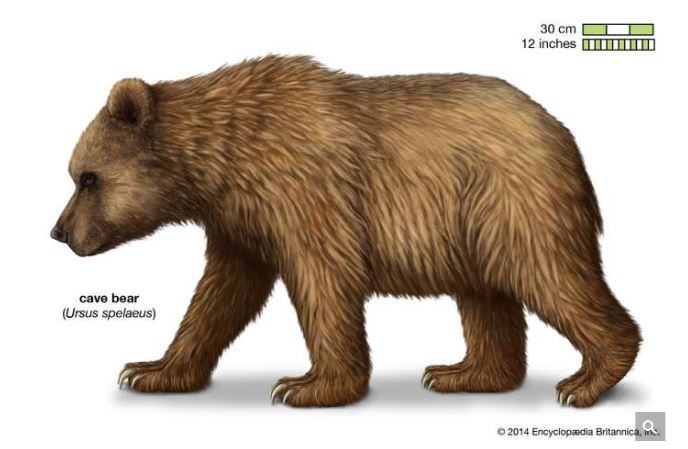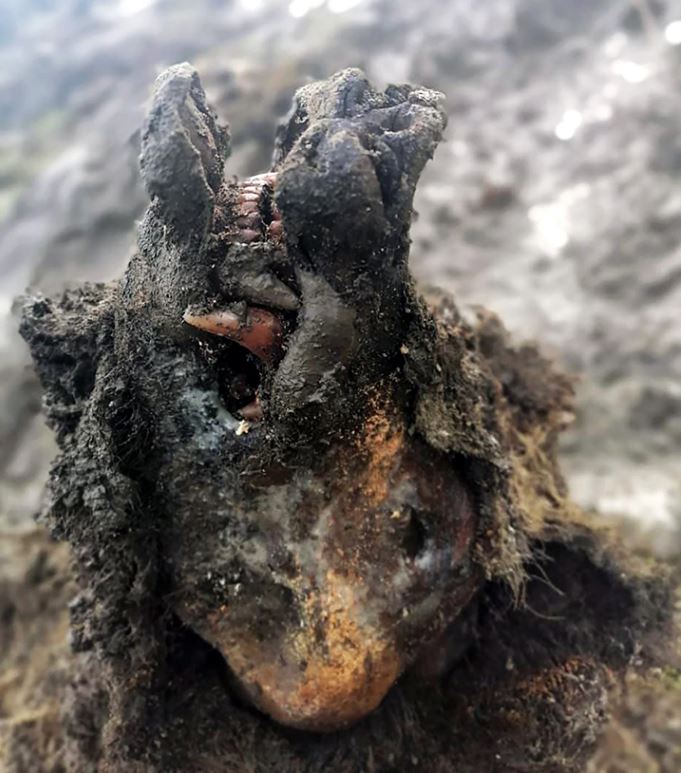A well-preserved carcass of an extinct cave bear species (Ursus spelaeus) was recently found on Bolshoy Lyakhovsky island which is the largest of the Lyakhovsky Islands belonging to the New Siberian Islands archipelago between the Laptev Sea and the East Siberian Sea in northern Russia.
The remains which reindeer herders found on the island were remarkably well preserved with all its internal organs in place, skin intact, fur, teeth, claws, body fat and even its nose still on.
Scientists at the North-Eastern Federal University (NEFU) in Yakutsk will analyze the carcass.
The cave bear
The cave bear (Ursus Spelaeus) lived in Europe and Asia during two different ice ages and is one of the best-known mammals of the Ice Age. The estimated time of the species extinction varies from 27,800 years ago to 8,000 years ago.

Dr. Lena Grigorieva a leading scientist at the NEFU´s Institute of Applied Ecology of the North said: 'A scientific programme for its comprehensive study will be prepared. We will have to study the carcass of a bear using all modern scientific research methods - molecular genetic, cellular, microbiological and others. The research is planned on as large a scale as in the study of the famous Malolyakhovsky mammoth'.
It will be interesting to see what new information about the species will be revealed after the analysis.
Source: Siberian Times, Cave Bears



